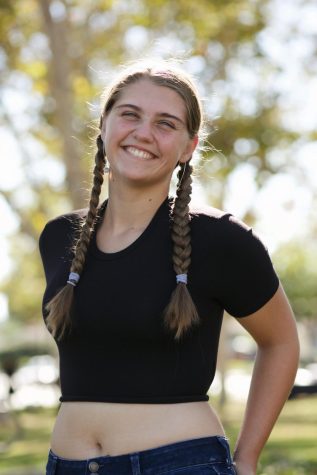Frustration flows from Biola student teachers as they attempt to complete their fieldwork through Zoom. According to Associate Professor of Education, Dr. Dennis Eastman, the connections student teachers experienced with their students were typically close, however, blank screens and muted microphones have made it difficult for personal connections to be made.
“The teaching environment that we’re interested in providing is one of connection,” said associate professor of education Dennis Eastman. “Student teachers work their way through their program, expecting to be able to teach in-person classes, but when the coronavirus hit the nation, their program just became harder.”
BACKGROUND
In order for student teachers to receive their credentials, they must complete their Teaching Performance Assessment. The assessment requires aspiring educators to observe a master teacher’s practices while also teaching alongside them.
“The intent of the fieldwork is to put theory into practice,” Eastman said. “Students get to learn theory and see it unfold in front of them [and] participate in the experience as well.”
Due to the coronavirus, student teachers have been working through their fieldwork via distance learning.
“It’s just been very challenging,” said student teaching and field placement coordinator Kimberly Van Lant. “It’s much harder because there are fewer options for placements… We’re providing everything they need to finish successfully and on time.”
The 114 districts Van Lant works with to place students in have their own obligations they must fulfill before they are able to take on student teachers. Master teachers are overwhelmed with the new experience of teaching virtually.
The School of Education and the state of California have been flexible with students to make sure they are completing their program on time. Some requirements have been relaxed as well as total hours needed in the field, Van Lant explained.
“The first two weeks were just getting to know them and learning online tools,” said Mackenzie Brandt, a graduate student at the School of Education. “That was special because in the classroom we wouldn’t have gotten that two weeks of just, ‘Hey we’re not teaching for two weeks—we’re just going to focus on you and making sure you’re mentally prepared to go into the school year.’”
THE STORMS
Eastman mentioned that many of his students have districts who do not require mics or cameras to be on during class.
This is hard for the student teachers to gauge the understanding of the class. They’re unable to see facial expressions or hear questions. The students can see the student-teachers working, but the student-teachers are unable to see their students. Eastman said that it’s challenging, but not impossible.
Lee explained that communication with the Fullerton School District has been difficult for planning future lessons. Each lesson is dependent on the status of the classroom’s location. An on-campus lessons will look different than online.
Another difficulty has been the student accountability—especially for Physical Education classes that require students to complete workouts.
Orlando Alfaro, also a graduate student at the School of Education, started off the school year by having his students submit videos of their workouts. Partway through the semester, he realized this wouldn’t work.
“When I said ‘Hey, you don’t have to video yourself,’ three minutes after class was over, a bunch of kids submitted their assignments… You didn’t finish that 15-minute workout three minutes after class is over.”
Teaching students hasn’t been the only difficulty. The state of California requires all teacher candidates to take the TPA in order to receive their preliminary teaching credentials.
“[TPA has] been the hardest part because video recording and all that stuff is very different now,” Brandt said. “Finishing our project adds an extra layer of stress.”
RAINBOWS IN THE CLOUDS
“Are there some rainbows in the clouds? Yeah, there have been,” Eastman said.
Some of his student teachers have been exposed to different teaching methods, opportunities and relationships they might not have had previously.
For other student teachers, their relationships with their master teachers have been the biggest blessing. Being online requires more communication than if their relationship was in person.
“My relationship with my master teacher is super special. She’s really mentored me and poured into my life,” Brandt said.
Brandt has been in constant communication with her master teacher figuring out what did and did not work. She mentioned her master teacher is up until 8 p.m. every night trying to find the best solutions to distance teaching.
“You learn to be creative in the way you connect with students and I don’t think I would be so intentional like having not gone through being online,” Brandt said. She said this intentionality carries into in-person classes.
Another positive aspect of online learning is the ability for student teachers to try different techniques without the stigma of failing that prohibits innovation. Alfaro’s master teachers have still provided him with excellent feedback with what he is doing while being humble enough to accept ideas from him as to what might work better.
“It’s really cool to know that I’m in this environment where mistakes can be made. Not for the sake of making mistakes, but for the sake of finding what’s going to be the most efficient way to provide education,” Alfaro said.
Some students appreciated being part of education’s change. The opportunity to instigate different teaching tactics is a rare one.
“I think it’s better than to be thrown into it after everything’s settled only because I can be a part of the initiating process, so I think of it like a project,” said Stephanie Lee, a graduate student at the School of Education. “If anything, it’s a national project.”












